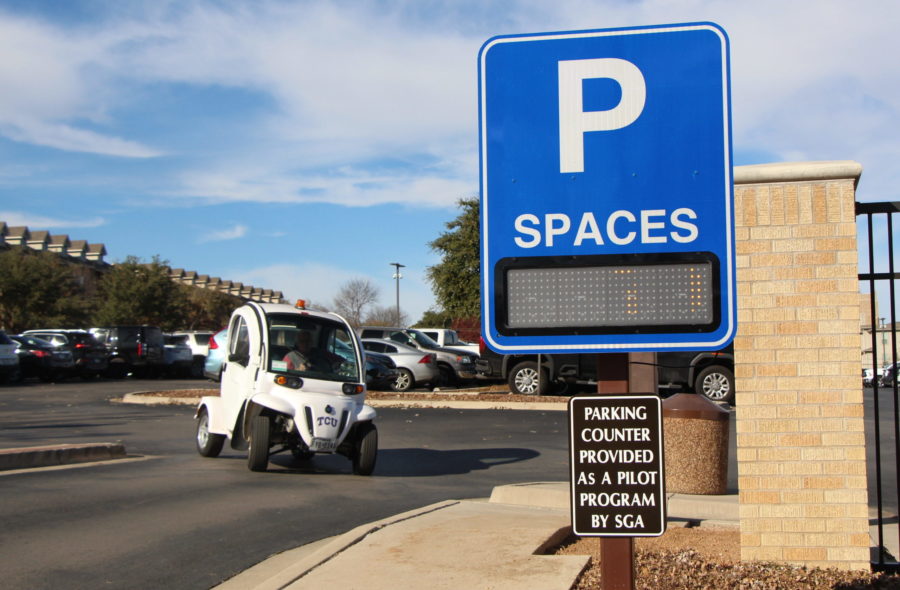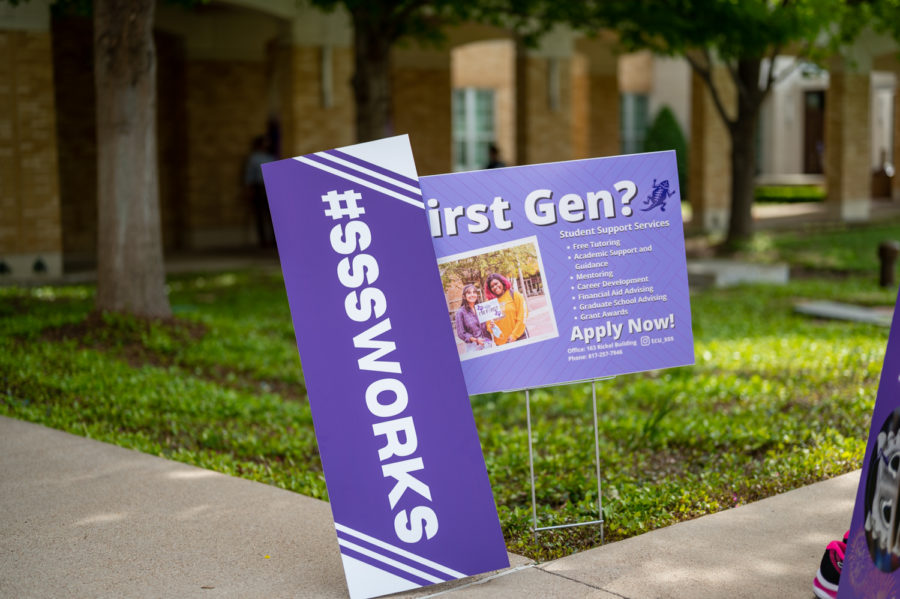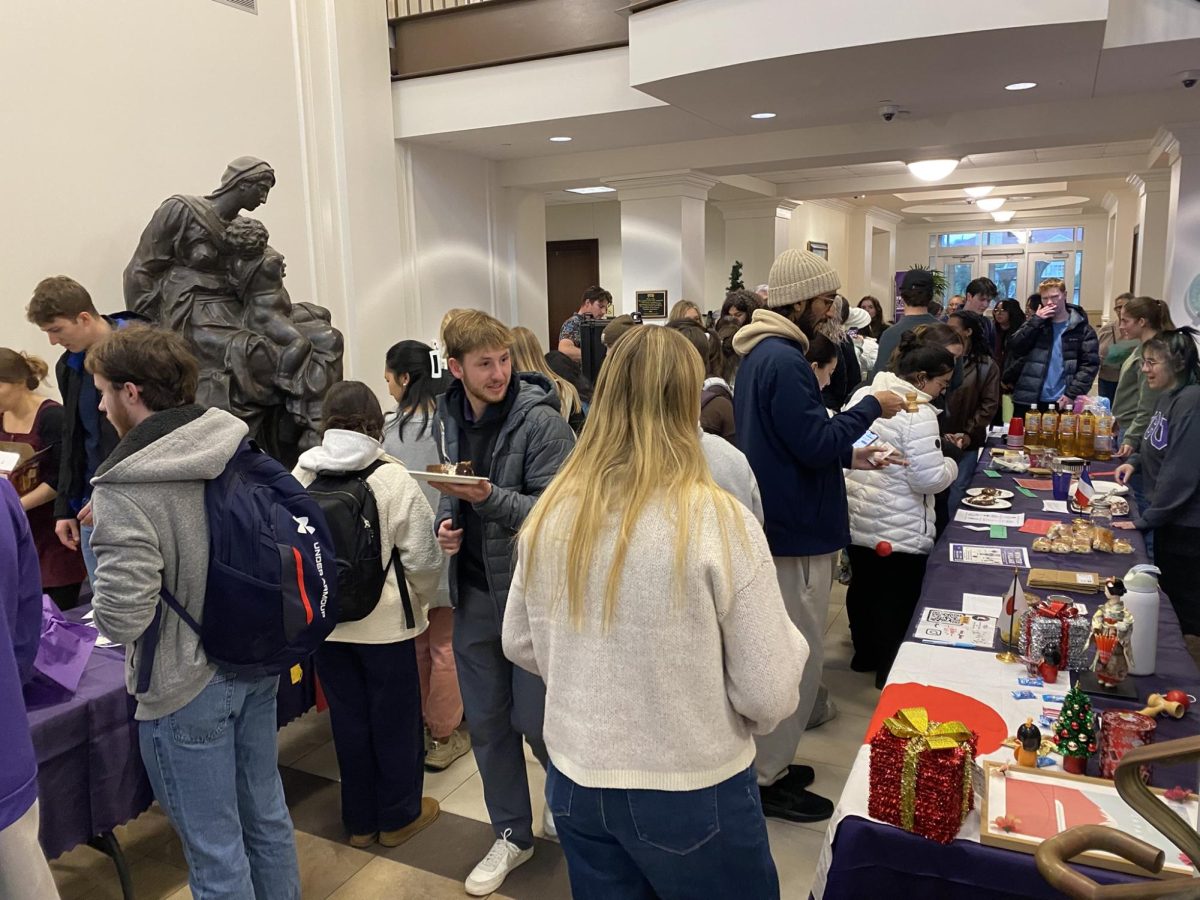
In efforts to address parking issues on campus, the Student Government Association (SGA) installed a sign outside Lot 15 on Lubbock Avenue that shows how many spots are open.
The sign, which was put up mid-November, was inspired by students’ requests for better parking and solutions formulated by similar universities, such as Baylor, said Paige Shiring, SGA’s treasurer.
The sign is currently part of a pilot program. Within the next year, SGA will take a sentiment survey to gauge student’s feelings about the sign. Additionally, SGA plans to ask for feedback from the administration and Facilities, the group responsible for maintenance of the sign.
SGA paid $14,000 for the sign; however, they only had the budget to purchase one, said Jack Leonhard, the speaker of the House of Representatives.
“We want to be able to optimize the students’ dollar and really put it towards things like that, that people see,” Shiring said.
Here’s how it works: when a car crosses the sensor in the entrance lane, the counter deducts one point, and when a car exits the lot, one space is added to the count.
The sign has the potential to save time when searching for a place to park, but its count can easily be inaccurate.
Project manager Woody Bruner said some people will, for example, exit through the entrance lane when the line gets backed up, which would disrupt the count. In order to correct the count, it has to be adjusted with a laptop.
“That’s a systemic thing that no technology can fix,” Leonhard said.
The counter also cannot distinguish between cars parked in the lot and cars that are driving through the lot, Shiring said, so the sign will show an incorrect value until the cars that are circling leave the lot.
In addition, the lot has to account for certain spaces that regular cars cannot park in, such as ones designated for electric vehicles, Bruner said.
Senior biology major Ashlyn Therkelsen said the sign is helpful for her when she arrives at campus later in the morning. She believes if additional lots had the signs, it would streamline the process of searching for a parking spot.
“It’s like a chain reaction, you know? You start from the closest, and then you work your way out,” Therkelsen said.
Kayla McKenzie, a senior kinesiology and health & fitness double major, said she parks in the lot three times per week. She said when she sees a low number on the sign and no one walking to the lot, she opts for a different lot.
McKenzie agreed with Therkelsen, saying having the signs on additional lots would be helpful.
“If this does work, there’s got to be more than one lot with [the sign],” Leonhard said. “It’s gotta target lots that students are parking in and have trouble parking in.”
Leonhard said SGA would consider purchasing additional counters for other lots on campus if students reported positive sentiments about it and university officials were open to the installation and upkeep of more signs.










